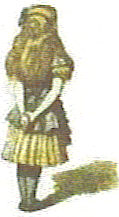IN a previous post on "Stardust," I was enamoured with "the product," that could do all the things that it said it could do.
-It is 99.8% Air
-Provides 39 times more insulating than the best fiberglass insulation
-Is 1,000 times less dense than glass
-Was used on the Mars Pathfinder rover
So having understood what "less gravity can do" in organizing of chemicals in space, it is of course of interest when such a chemical can be made into a product in it's "pure form," to have it "almost clear" in it's constitution and strong to hold weight.
It sort of opens the idea for me of manufacturing processes in space, and the construction of and use of those same products to build in space, and on, "planets of the future"
Almost as light as air, capable of withstanding a direct flame or catching speeding comet dust like a baseball mitt stops a hardball, aerogels are some of the strangest solids in the world. This "Space Age Styrofoam" was developed in a chemistry lab decades ago but is now appearing in snowsuits, explosives and even energy storage technology.
Aerogels are the lightest and lowest-density class of materials in the world. Up to 99 percent of the dry, rigid gels are air, while the rest consists of silica, carbon, metals and other substances; it feels like a Styrofoam peanut. Yet, some formulations can support close to two thousand times their weight (if it is lowered onto them slowly). "Enough force to crush a Rice Krispie will crush an aerogel," states Stephen Steiner, a nanomaterials graduate student at the Massachusetts Institute of Technology and aerogel researcher.
 <Image: COURTESY OF LAWRENCE BERKELEY NATIONAL NATIONAL LABORATORIES-Aerogels are poor thermal conductors and therefore exceptional insulators for windows, snowsuits and spacecraft
<Image: COURTESY OF LAWRENCE BERKELEY NATIONAL NATIONAL LABORATORIES-Aerogels are poor thermal conductors and therefore exceptional insulators for windows, snowsuits and spacecraft Image: COURTESY OF NASA/JPL-CALTECH-Translucent silica aerogel is mostly air but two grams of the material is strong enough to hold a 2.5 kilogram brick
Image: COURTESY OF NASA/JPL-CALTECH-Translucent silica aerogel is mostly air but two grams of the material is strong enough to hold a 2.5 kilogram brickI was less then kind in my statements about stardust, as the images of dust in the air were given for introspection, about how we might see that dust in the universe.
"Last Sunday, after seven years in space traveling nearly three billion miles, Stardust landed in the Great Salt Lake Desert with a treasure from when the solar system formed 4.6 billion years ago," says astronomer Donald Brownlee of the University of Washington, who led the Stardust team. "We should have more than one million particles larger than one micron in diameter."
 Image: D. BROWNLEE / NASA-Collecting of Stardust
Image: D. BROWNLEE / NASA-Collecting of Stardust



